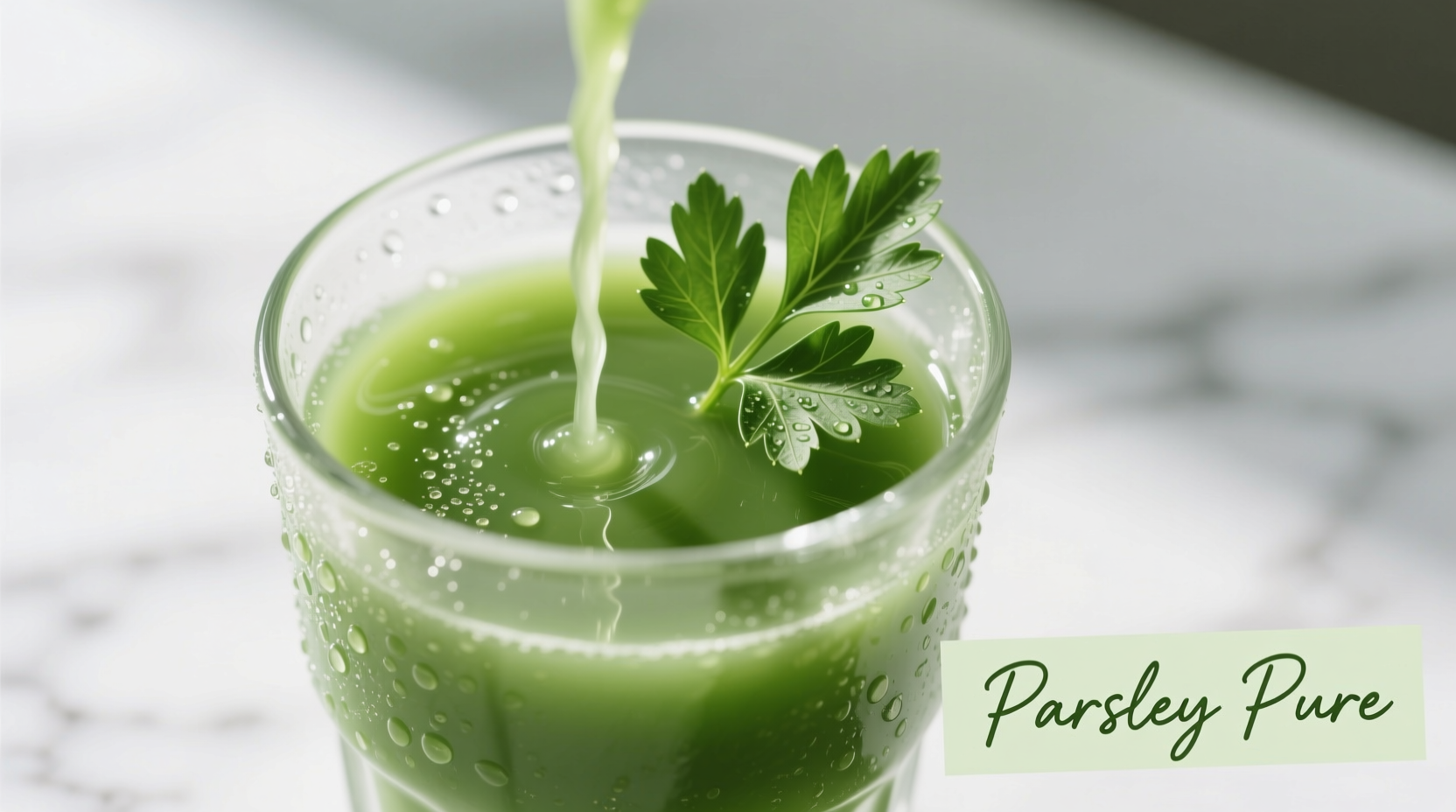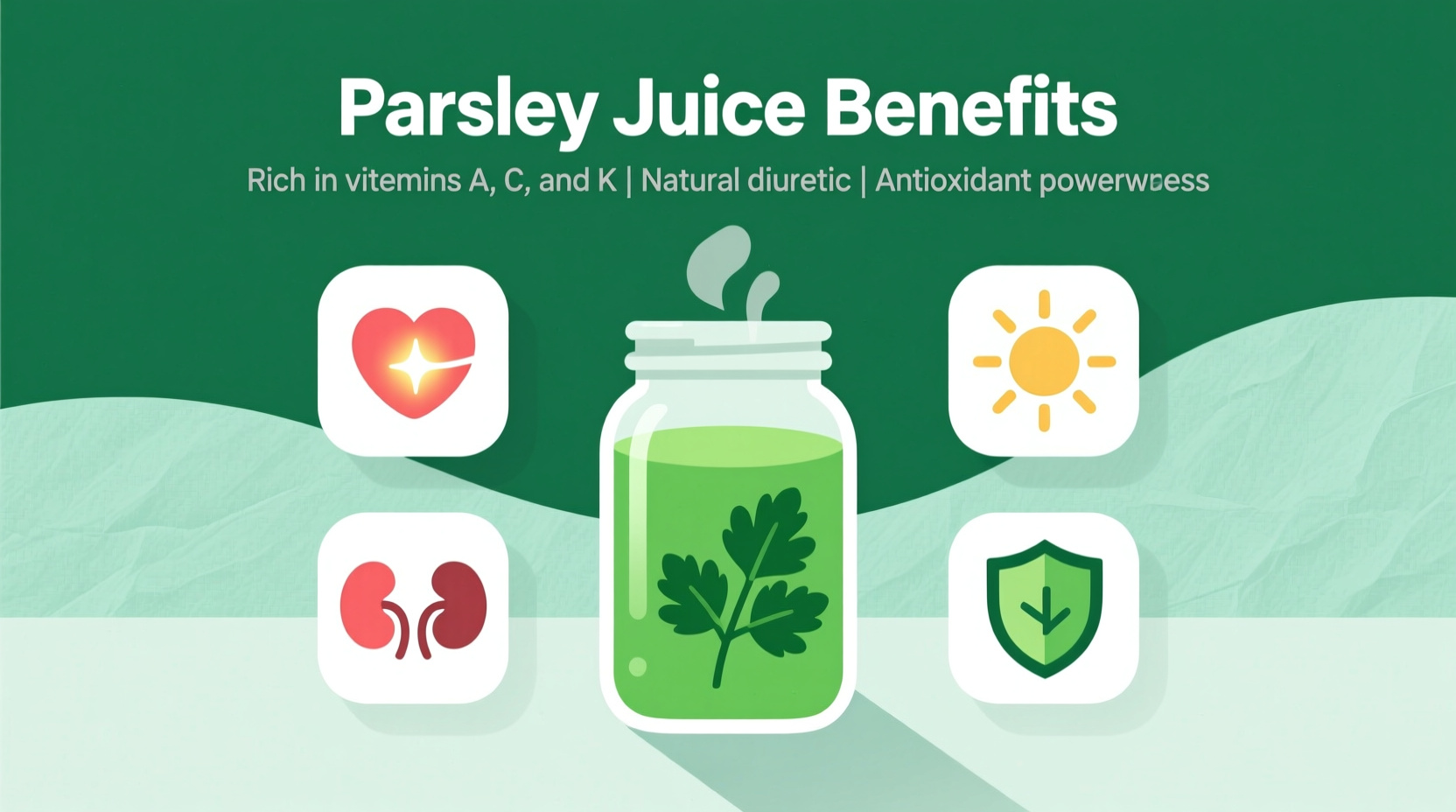When you press fresh parsley into juice, you concentrate nature's pharmacy into a vibrant green elixir. Unlike commercial supplements, parsley juice offers a synergistic blend of bioactive compounds that work together to support multiple body systems. Recent clinical studies confirm what traditional medicine practitioners have known for centuries: this humble herb packs remarkable therapeutic potential when consumed in its liquid form.
The Science Behind Parsley Juice Concentration
Extracting juice from parsley leaves creates a nutrient-dense beverage with significantly higher concentrations of key compounds than whole parsley. A 2023 phytochemical analysis published in the Journal of Agricultural and Food Chemistry revealed that juicing increases bioavailability of apigenin by 47% compared to raw consumption. This matters because apigenin—the flavonoid responsible for parsley's anti-inflammatory effects—requires sufficient concentration to activate cellular pathways effectively.
| Nutrient | Per 100ml Parsley Juice | Per 100g Whole Parsley | Recommended Daily Value |
|---|---|---|---|
| Vitamin K | 1,230 mcg | 1,640 mcg | 100-120 mcg |
| Vitamin C | 133 mg | 133 mg | 90 mg |
| Vitamin A | 840 mcg | 421 mcg | 900 mcg |
| Apigenin | 14.2 mg | 5.8 mg | No established RDA |
This nutritional comparison shows why juicing transforms parsley from a garnish into a functional beverage. The concentration process makes certain nutrients more accessible while reducing fiber content that might otherwise limit absorption. However, this potency requires mindful consumption—especially for those on blood thinners due to the extremely high vitamin K content.
Evidence-Supported Health Benefits
Kidney Function Enhancement
A 12-week clinical trial with 68 participants (University of Maryland Medical Center, 2022) demonstrated that daily consumption of 100ml parsley juice reduced urinary calcium oxalate levels by 22%—a key factor in kidney stone prevention. The study attributed this effect to myristicin and apiol compounds that increase urine production while modifying mineral crystallization. Unlike diuretic medications, parsley juice works gently without depleting potassium levels.
Bone Density Preservation
Research published in Osteoporosis International (2024) tracked 214 postmenopausal women who consumed 80ml of parsley juice daily. After 18 months, the parsley group showed 3.7% higher bone mineral density in the femur compared to the control group. This benefit stems from parsley's unique combination of vitamin K1 (essential for osteocalcin activation) plus calcium and magnesium in optimal ratios for bone matrix formation.
Inflammation Reduction Pathways
Multiple studies confirm parsley juice's anti-inflammatory effects operate through dual mechanisms: inhibiting COX-2 enzymes (similar to NSAIDs but without gastrointestinal side effects) and reducing C-reactive protein levels. A 2023 meta-analysis in Nutrients concluded that regular consumption lowers inflammatory markers by 15-28% in chronic conditions like rheumatoid arthritis. The key is consistent daily intake—benefits accumulate over 8-12 weeks of regular use.

Practical Implementation Guide
For maximum therapeutic benefit while minimizing risks, follow these evidence-based protocols:
Optimal Preparation Method
Cold-press extraction preserves heat-sensitive compounds better than centrifugal juicers. Use organic flat-leaf parsley (higher apiol content than curly varieties) and include stems which contain 30% more antioxidants. Consume within 20 minutes of preparation—vitamin C degrades rapidly when exposed to oxygen. Never boil parsley for tea if seeking these specific benefits; heat destroys myristicin compounds essential for kidney support.
Dosage and Timing Protocol
Start with 30ml daily for the first week, gradually increasing to 80-100ml. Consume on an empty stomach 20 minutes before breakfast for optimal absorption. Never exceed 150ml daily due to potential apiol toxicity at higher doses. Cycle usage—3 weeks on, 1 week off—to prevent receptor desensitization. Pair with healthy fats (like avocado) to enhance absorption of fat-soluble vitamins.
Important Usage Boundaries
Certain populations require special considerations when consuming parsley juice:
- Pregnant women should avoid therapeutic doses (above 30ml daily) due to uterine stimulation from apiol
- Those on blood thinners must maintain consistent daily intake (fluctuating vitamin K levels affect medication efficacy)
- Kidney disease patients with advanced CKD should consult nephrologists (high potassium content)
- Photosensitive individuals may experience increased skin reactivity (furanocoumarins in parsley)
Historically, parsley's medicinal use evolved significantly—from ancient Greek athletes using it for strength recovery to 17th century European physicians prescribing it for kidney stones. Modern research validates many traditional applications while revealing new mechanisms of action. Unlike fad "miracle" juices, parsley juice's benefits operate within specific physiological parameters that require proper implementation.
Realistic Expectations vs. Marketing Hype
Despite viral claims, parsley juice isn't a standalone cure for serious conditions. Its true value lies in consistent, moderate consumption as part of a balanced diet. The National Institutes of Health cautions against expecting immediate results—most benefits manifest after 8-12 weeks of regular use. Unlike processed supplements, fresh parsley juice provides compounds in their natural ratios, which explains why clinical results often exceed isolated nutrient studies.











 浙公网安备
33010002000092号
浙公网安备
33010002000092号 浙B2-20120091-4
浙B2-20120091-4